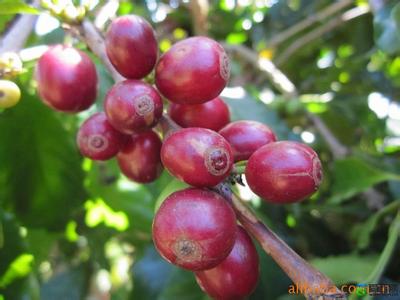Brief introduction of Grinding scale for description of Standard Flavor of washed Cochell Coffee beans
Brief introduction of Grinding scale for description of Standard Flavor of washed Cochell Coffee beans
Sun Jie Jia Xue coffee sets a strict standard for collecting red fruits (as a result of coffee trees). Before exposure to coffee fruits, unripe green fruits or defective fruits are removed manually, and then damaged or moldy fruits are removed during the sun drying process. after two weeks, the sugar and essence of the flesh and essence seep into the coffee beans, the water content is reduced to 12%, and then scrape the hardened pulp, pectin layer and pods with a planer. Take out the coffee beans and test the density and color of the sun. The beans are small and neat and short round. Ethiopian sun beans are generally G3--G5, but this bean is G2 (about the grading of Ethiopian coffee beans, I will open a new paste), which is equal to the grade of washed beans. Although there are still a few defective beans, they are commendable compared to the sun beans of Harald and Sidamo.
In fact, what I want to say is that it's not just Yega Snow Coffee, but coffee with high alcohol thickness and bitterness like Mantenin.
One of the highest coffee producing areas in Ethiopia. However, the mode of production and flavor here are so outstanding that Ethiopian coffee farmers compete to be proud of the flavor of their coffee, so they are independent from Sidamo and become the most famous producing area in Africa.
Coffee trees are likely to be found in Ethiopia's KAFFA province. Later, batches of slaves were sold from Africa to Yemen and the Arabian Peninsula, and coffee was taken everywhere along the way. To be sure, Yemen started growing coffee in the 15th century or earlier. Although Arabia had the busiest port city in the world at that time, it banned the export of any seeds. This barrier was finally broken through by the Dutch, and in 1616, they finally smuggled the surviving coffee trees and seeds to the Netherlands and began to grow them in greenhouses.

Important Notice :
前街咖啡 FrontStreet Coffee has moved to new addredd:
FrontStreet Coffee Address: 315,Donghua East Road,GuangZhou
Tel:020 38364473
- Prev

Do candles describe the taste characteristics of Sidamo or Yega Snow Coffee beans?
Drima Zede Candlestick Candlestick description Taste characteristics of Drima Zede Coffee beans Candlestick Candlestick Candle Origin: Sidamo, Ethiopia altitude: 1750-2000 treatment: solarization Drima Zede (candle, the name of Yega Xuefei) means Best Approach in the local dialect
- Next

Distinguishing characteristics of coffee beans from three continents planting environmental area
The planting area of coffee beans on three continents used to be the second largest coffee producer only in Brazil, but Colombia, which has been overtaken by Vietnam and ranked third in the world, is the largest supplier of washed beans in the world. Colombia has become synonymous with good coffee after years of image-building. Although the flavor is balanced, the texture is thick, and the famous sour taste, the aroma is also good.
Related
- Guji coffee producing area of Guji, Ethiopia: Humbela, Shakiso, Wulaga
- What is the most expensive variety of Qiloso in BOP multi-variety group?
- How to store the coffee beans bought home?
- Why are Yemeni coffee beans so rare now?
- Ethiopian Sidamo all Red Fruit Sun Sun Santa Vini Coffee beans
- SOE is mostly sour? What does it mean? Is it a single bean? what's the difference between it and Italian blending?
- Is Italian coffee beans suitable for making hand-brewed coffee?
- How to choose coffee beans when making cold coffee? What kind of coffee beans are suitable for making cold coffee?
- Just entered the pit to make coffee, what kind of coffee beans should be chosen?
- Can only Japan buy real Blue Mountain Coffee? What are authentic Jamaican Blue Mountain coffee beans?

